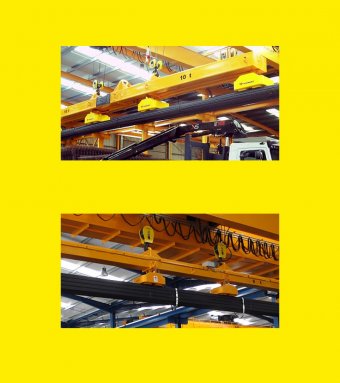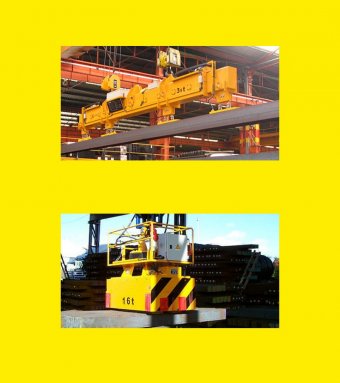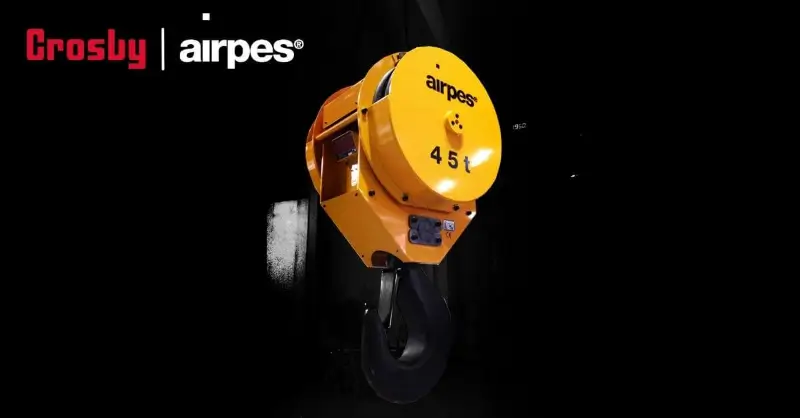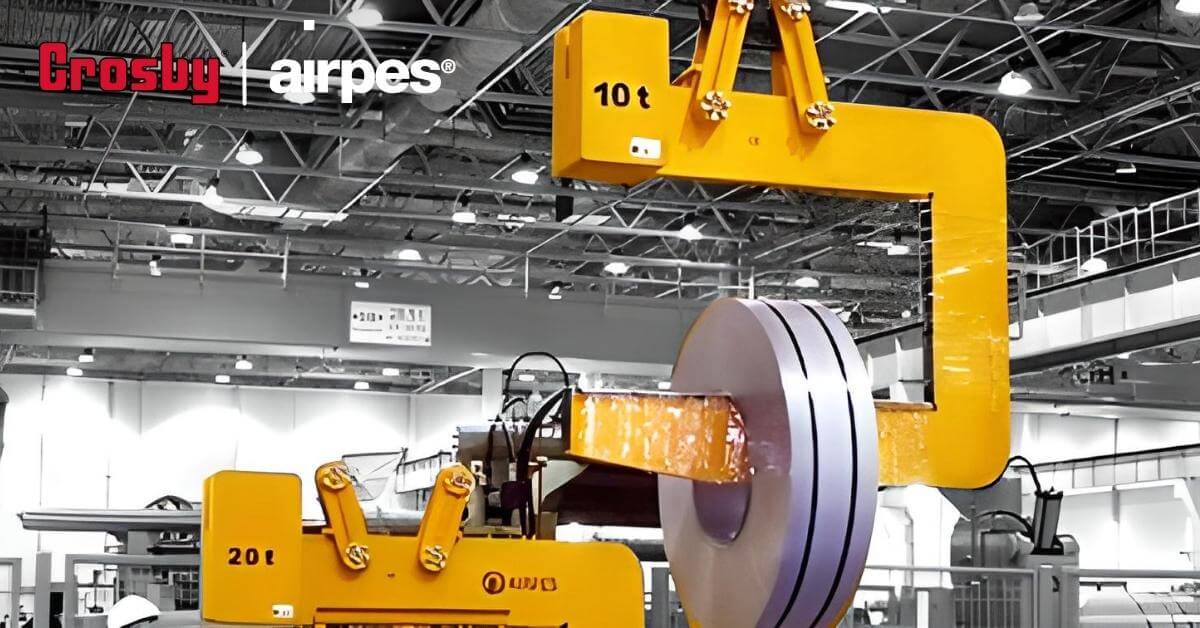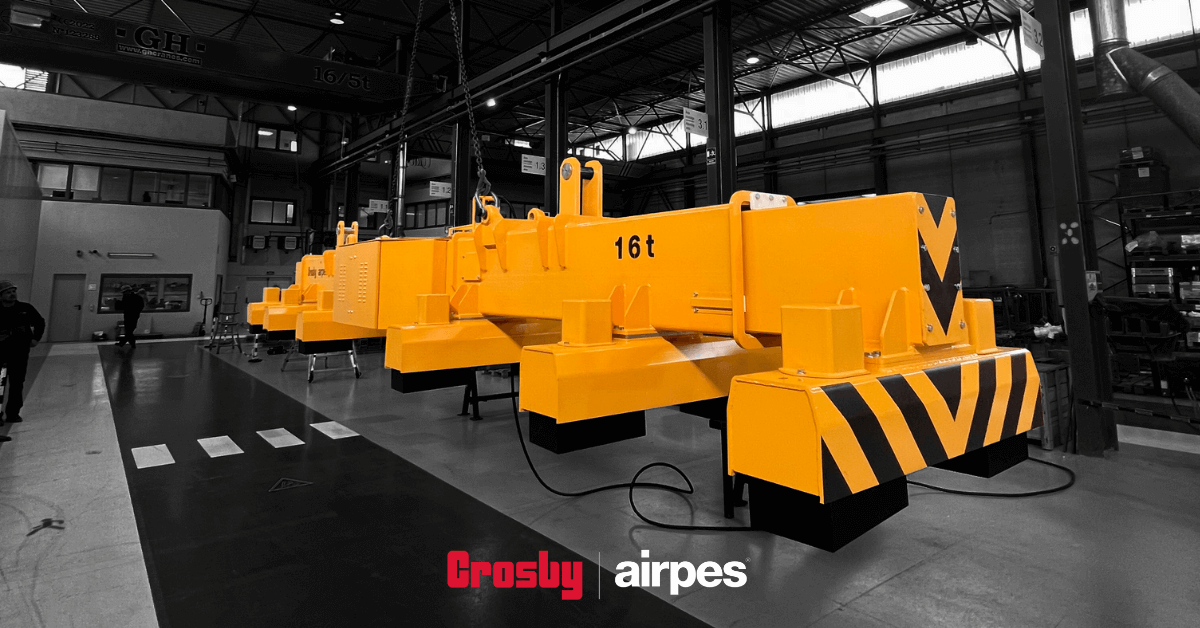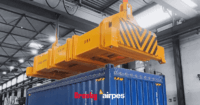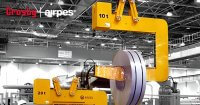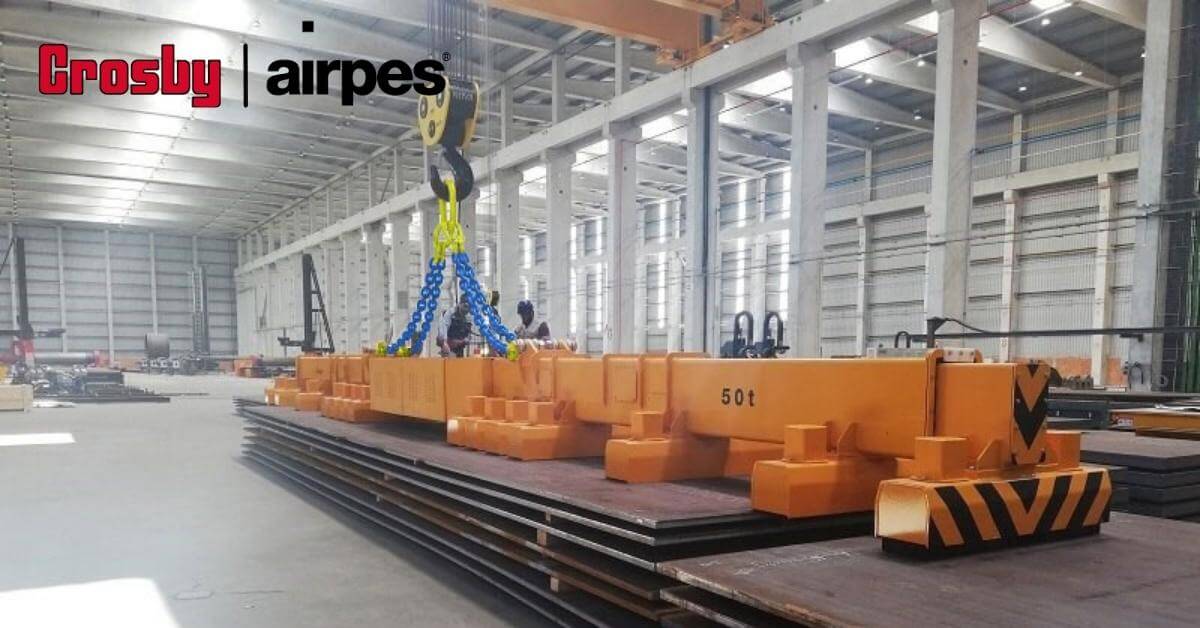
Sometimes accidents in the workplace can occur, damaging machinery, infrastructure, products, or even people. However, most accidents are caused by a failure in the execution of safety protocols, either by lack of maintenance of lifting devices, by making those devices work beyond their capacities, or because there is a wrong calculation of external variables that affect the working capacity of the machinery.
The lifting electromagnets are one of the most versatile and functional devices in any environment and company that works with metallic elements or subproducts. Therefore it is a device in which we have a lot of experience adapting it to different environments.
In Crosby Airpes, we work under the most advanced controls and methods of calculating efforts in the design of all our lifting electromagnets. This article will describe some guidelines so that a lifting magnet always works at maximum performance without being a risk for anyone.
Wait… what is a lifting magnet?
If you are an expert in lifting and handling equipment, you can skip this section.
Lifting magnets are devices that use magnetic force to lift and move materials without physical contact, primarily ferromagnetic materials like iron and steel. Principal benefits are:
- Safety: They enhance safety by reducing the need for direct contact, thereby minimizing the risk of injuries associated with manual lifting.
- Efficiency: Lifting magnets speed up the process of moving heavy materials, which can enhance productivity in industrial settings.
- Cost-Effectiveness: They reduce the need for additional lifting equipment, like chains and hooks, which can lower operational costs.
- Precision: Magnets can be controlled with high precision, allowing for exact placement of materials, which is particularly useful in delicate operations.
- Versatility: They are versatile and can be used in a variety of industrial applications, including warehouses, manufacturing, and construction.
Our systems are designed to work in extreme conditions like really high temperature, dust and heavy duty.
Active and passive safety in lifting magnets
As in the case of vehicles, there are two types of safety measures for electromagnets, lifting magnets and any lifting device:
- Active safety
- Passive safety.
To avoid accidents and damage in Crosby Airpes, we pay attention to these two types of safety levels that must be considered when designing every one of our electromagnets and lifting magnets.
But what is the difference between active safety and passive safety?
Active safety in lifting magnets
The rules and elements of active safety are all those devices, sensors, and standards of use of the lifting magnet that prevent an accident with a lifting electromagnet. Some examples of active safety regulations are the following.
Authorized operator
The operator of the electromagnet must always be an authorized and qualified worker to operate this type of machinery. Never authorize anyone without the necessary knowledge to use a lifting electromagnet.
Previous inspection
Never use the lifting electromagnet without inspecting it visually and ensuring that all elements of the device are in good condition. Check for any signs of wear, damage, or malfunction, and verify that all connections and fittings are secure.
Respect load limits
The loads to be lifted must be within the ratio limits marked by the rule of theoretical maximum load/actual load. Usually, this limit is quite conservative. The most common ratio we mark for most electromagnets is 3:1, although we can change it from one electromagnet to another. For example, if the theoretical limit of the electromagnet is 6 tons, never attempt to lift more than 2 tons of material.
Temperature limits
Pay attention to the temperature under which you operate the lifting magnet. The most common safety limit is 70ºC or 150ºF. This limit is because ferric materials lose electromagnetic capacities when the temperature increases. If you work at high temperatures, Crosby Airpes will incorporate these data in calculating stress efforts during the design or look for other lifting systems that do not work with magnetization.
Vibrations
Avoiding vibrations is crucial when using lifting magnets due to several potential risks. Vibrations can cause gradual de-magnetization, reducing the magnetic field’s strength and potentially leading to the unintentional release of the load. Additionally, mechanical components like bolts may loosen, compromising the integrity and alignment of the lifting system. This can pose severe safety risks, including the detachment of parts.
Balance
It would be best if you balanced the load before lifting it. Ensuring the load is balanced optimizes the distribution of weight across the magnet’s surface, which is essential for maintaining a strong and stable magnetic hold. This prevents the load from shifting during movement, which could otherwise lead to potential accidents or damage to the materials being handled.
Sound
The lifting magnet will incorporate sound to warn that it is operating and, in some cases (plants with an intense noise), also lights.
Batteries
All our electromagnets incorporate batteries to prevent the load from being released if there is a power loss or failure.
Surface gap
Make sure that the surfaces of the elements to be lifted are clean and have no coatings (paint, varnish, etc.) thicker than what is recommended by Crosby Airpes.
Sensors
We can fit Crosby Airpes electromagnets with support sensors, i.e., they can detect if the load is already on the ground before releasing it.
Smooth operation
The movements of the crane must be smooth. The crane holding the electromagnet should not be accelerated or decelerated abruptly.
Regular inspections
Make sure the equipment is serviced according to the Crosby Airpes inspection schedule.
Passive safety in lifting magnets
Passive safety standards and elements are all those devices, sensors, and rules that prevent serious personal injury or material damage to workers or the company in the event of an accident. Some examples of passive safety rules that minimize damage in an accident are the following.
- The electromagnet should not travel above areas where elements or goods of the company are susceptible to damage, such as other machinery, vehicles, etc.
- No one should be in the operating area when the electromagnet is working, under no circumstances.
- People with metal body implants and/or heart pacemakers should not get close to the electromagnet and its working area at any time and under any circumstance.
You may be interested in: 5 safety tips while using electromagnets
The actual operation of an electromagnet
- In this video, you can see an electromagnet working in a real environment.
- An operator inside the crane’s cabin is controlling this electromagnet.
- There are two types of electromagnets in this video. One is on a fixed beam, and the other is on an extensible beam.
Two types of lifting magnets to fulfill your needs
Crosby Airpes help you with the safety of your lifting magnets
At Crosby Airpes, we help you to find your perfect lifting system.
Do you have specific needs? We adapt to them with our on-demand solutions.
-
LIFTING ELECTRO MAGNET
We have the most interesting products in the industrial electromagnet field because we are in charge of the whole lifting electromagnet design, but…LIFTING ELECTRO MAGNETSeptember 22, 2020
-
ELECTRO PERMANENT LIFTING MAGNET
Take a look at our electro permanent lifting magnet that offers power and reliability. Our electro permanent lifting magnet has…ELECTRO PERMANENT LIFTING MAGNETSeptember 22, 2020
At Crosby Airpes, we design lifting electromagnets, and permanent electromagnets adapted to your projects.

